Difference Between Blue Tip and Black Tip Notebook Charger
What's The Difference Between The Blue And Black USB Ports?
What's The Difference Between The Blue And Black USB Ports?Anyone who's worked with electronics or electricity for any length of time knows that important standards are used for color coding. For example, when working with the wiring in your home you'd better know that black wires are "hot," white wires are neutral, and green wires go to ground – or you could find yourself going to the ground after taking a good belt of electricity.
There are color coding conventions for electronics as well. They're usually not crucial for safety reasons, but if you don't know the significance when hooking up your components, there's a good chance that the equipment won't work properly.
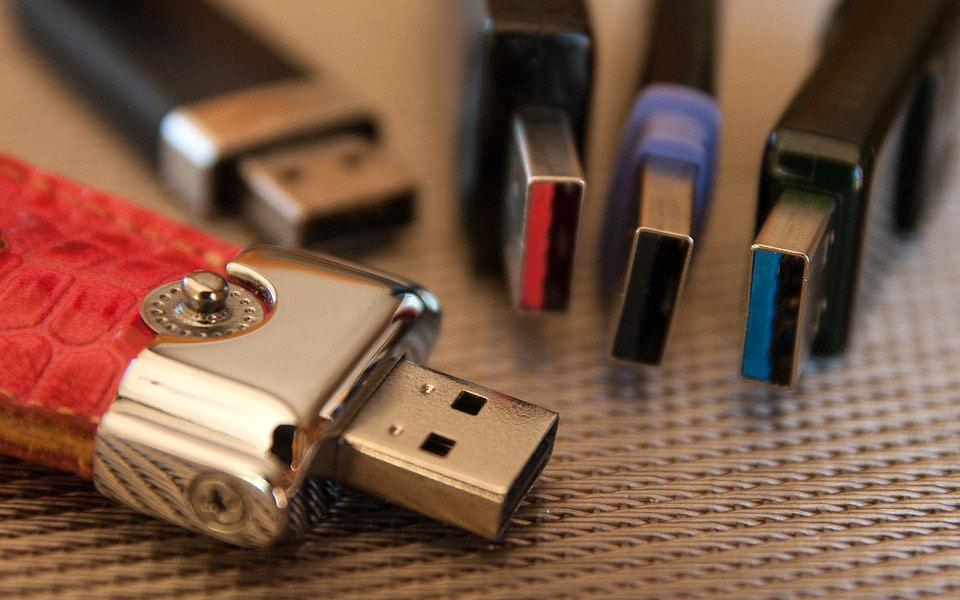
A Brief History of USB
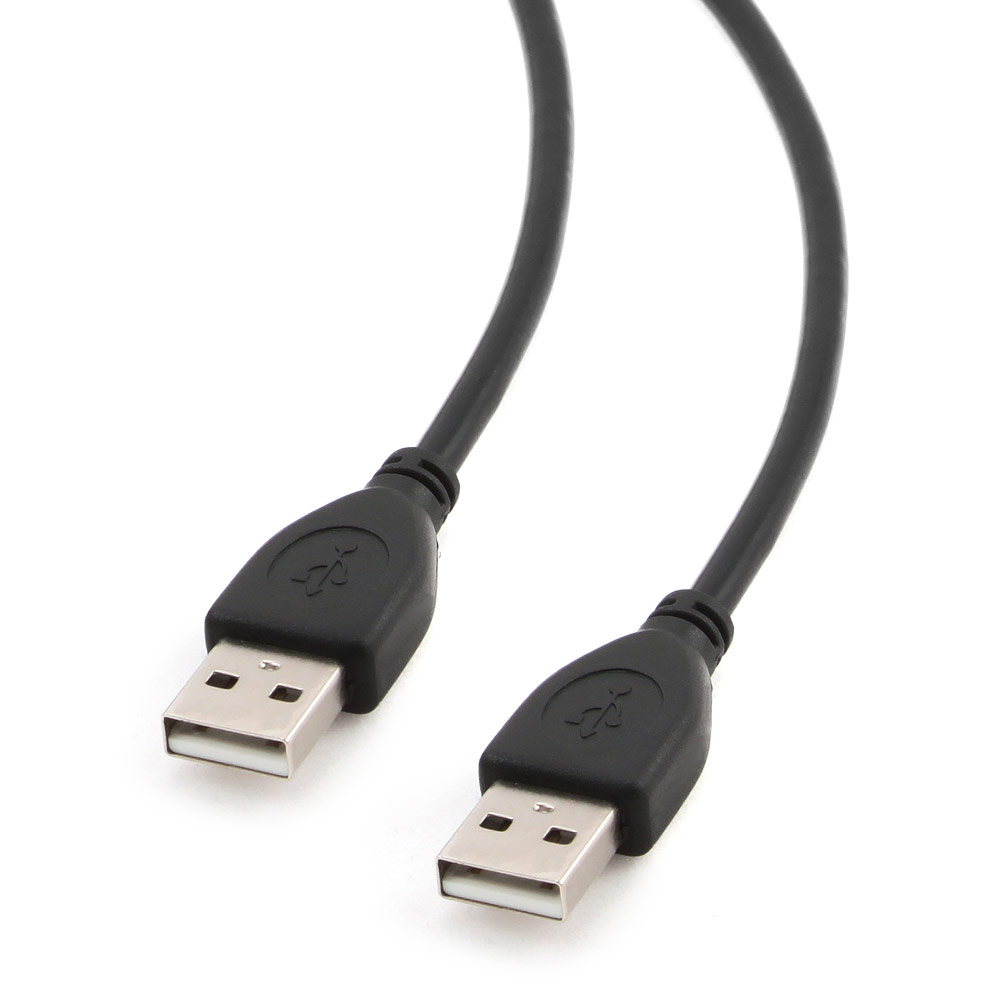 The Universal Serial Bus (USB) was a groundbreaking way to connect computer peripherals and other components. However, when it was first introduced in the late 1990s it was – like all computer-related hardware at the time – very slow by today's standards. It became known as USB 1.0 when a faster version of the technology, USB 2.0, was released in the year 2000. With a maximum transfer rate of 480 Mbps, USB 2.0 was 40 times faster than USB 1.0. It became known as "hi-speed USB."
The Universal Serial Bus (USB) was a groundbreaking way to connect computer peripherals and other components. However, when it was first introduced in the late 1990s it was – like all computer-related hardware at the time – very slow by today's standards. It became known as USB 1.0 when a faster version of the technology, USB 2.0, was released in the year 2000. With a maximum transfer rate of 480 Mbps, USB 2.0 was 40 times faster than USB 1.0. It became known as "hi-speed USB."
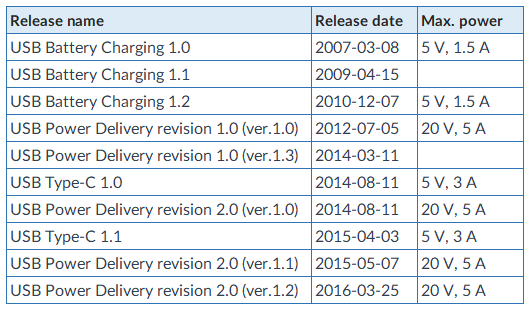
With technology advancing at a rapid rate, "hi-speed" was really just a relative term. By 2008 a speed of 480 Mbps wasn't high speed at all, and a new standard was created to handle the ever-increasing need for faster data transfer. USB 3.0 debuted in that year, and it could transfer data ten times faster than USB 2.0, at speeds up to 5 Gbps. USB 3.0 was also known as SuperSpeed, to differentiate it from the optimistically-named "hi-speed."
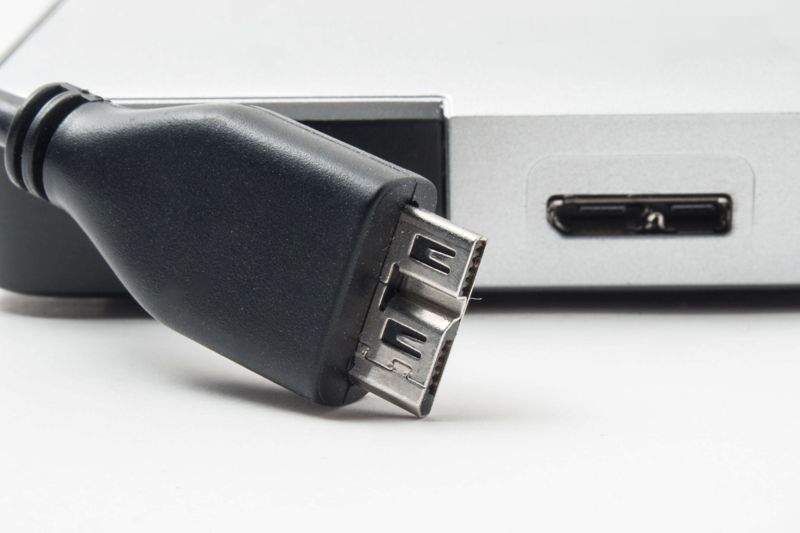 With technology advancing at a rapid rate, "hi-speed" was really just a relative term. By 2008 a speed of 480 Mbps wasn't high speed at all, and a new standard was created to handle the ever-increasing need for faster data transfer. USB 3.0 debuted in that year, and it could transfer data ten times faster than USB 2.0, at speeds up to 5 Gbps. USB 3.0 was also known as SupeIncremental changes in the versions were made before new standards were released, which is why you'll see references to names like "USB 1.1." The most recent change came in 2013 when USB 3.1 was introduced; it can handle transfer speeds up to 10 Gbps, twice as fast as USB 3.0. It was given the name SuperSpeed+ and is still the "gold standard" today.
With technology advancing at a rapid rate, "hi-speed" was really just a relative term. By 2008 a speed of 480 Mbps wasn't high speed at all, and a new standard was created to handle the ever-increasing need for faster data transfer. USB 3.0 debuted in that year, and it could transfer data ten times faster than USB 2.0, at speeds up to 5 Gbps. USB 3.0 was also known as SupeIncremental changes in the versions were made before new standards were released, which is why you'll see references to names like "USB 1.1." The most recent change came in 2013 when USB 3.1 was introduced; it can handle transfer speeds up to 10 Gbps, twice as fast as USB 3.0. It was given the name SuperSpeed+ and is still the "gold standard" today.
There are two more differences between 2.0 and 3.0 to consider. USB 2.0 only provides one-way transmission, meaning that at any given time data is either being sent or received through the cable. USB 3.0 uses two different, dedicated one-way paths, so data can be sent and received at the same time. And while USB 2.0 can only provide a maximum of 500 mA of current to power devices, USB 3.0 can provide as much as 900 mA of current and is able to conserve power when it's not being used.
One of the great things about USB standards is that they are, for the most part, backward-compatible. In other words, you can connect USB 2.0 and USB 3.0 devices and they'll still work just fine. But you can't get the full throughput supported by USB 3.0 unless all devices and cables/connectors use the newer standard. They'll instead operate at the "lowest common denominator," which in this case is USB 2.0's 480 Mbps maximum transfer speed.
Understanding USB Port and Connector Colors
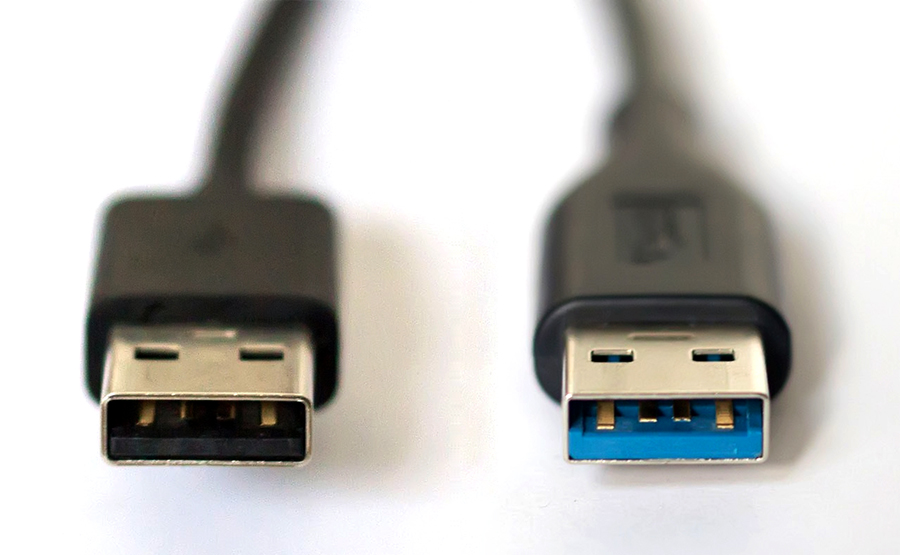
You should now understand why there are color conventions for USB ports and connectors.
- White: This usually signifies an old-school USB 1.0 connector or port.
- Black: This color identifies a USB 2.0 Hi-Speed connector or port
- Blue: This signifies a newer USB 3.0 SuperSpeed connector or port
- Teal: The most recent addition to the USB color chart identifies a 3.1 SuperSpeed+ connector or port.
Backward-compatibility means you can normally plug a USB 2.0 cable into a USB 3.0 port, but you won't be getting all of the benefits of a USB 3.0 connection. Paying attention to the color-coding on your ports and cables will allow you to use the proper cables in order to achieve maximum data transfer and get power for your USB devices.

What About Those Red, Orange or Yellow USB Ports and Connectors?
Newer laptops or other devices may have one or two USB ports colored red, orange or yellow. The colors don't indicate a USB specification like 2.0 or 3.0, but instead mean that power to the port is always "on." This feature is sometimes called sleep-and-charge because it means you can plug a device (like a phone) into the port and let it charge while the computer is turned off. You'll most often find this feature on USB 3.0 or 3.1 ports.
Don't let the "power" issue stop you from using the port; even it isn't colored blue (or teal), it is still a standard USB port and can be used to connect any compatible device.
 Cmple has all of the high-quality, properly color-coded USB cables and connectors you could need for any purpose, and of course, at our always-low prices.
Cmple has all of the high-quality, properly color-coded USB cables and connectors you could need for any purpose, and of course, at our always-low prices.
Source: https://www.cmple.com/learn/whats-the-difference-between-the-blue-and-black-usb-ports
0 Response to "Difference Between Blue Tip and Black Tip Notebook Charger"
Post a Comment